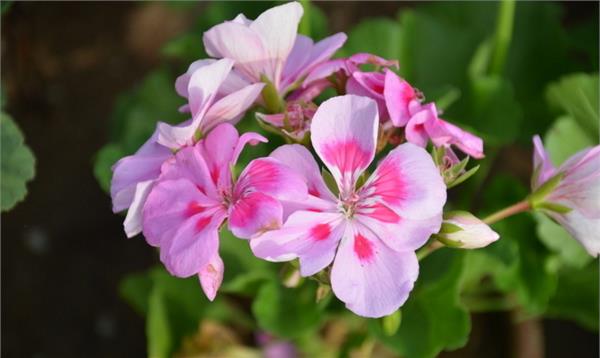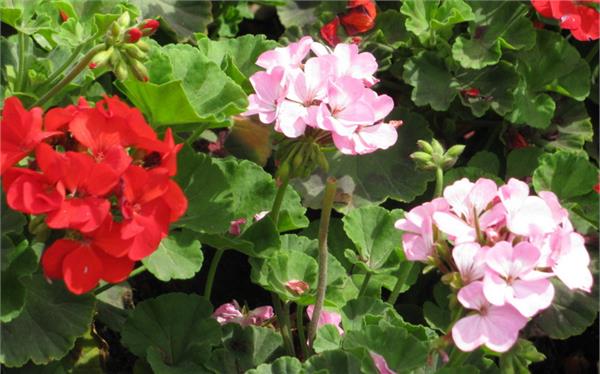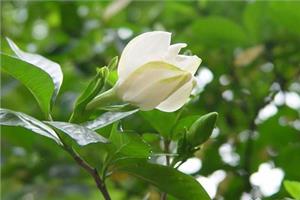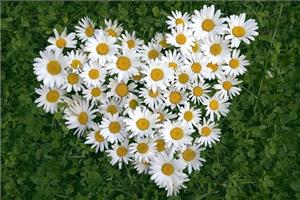What's with the yellowing of geranium leaves?
Geraniums are native to Africa and are now grown in all parts of the world. It is very suitable for indoor breeding and viewing. Pelargonium, nicknamed Hydrangea, is a fleshy herb and is easy to breed. Recently, some owners mentioned that the leaves of the newly grown geraniums in their families turned yellow. what happened? Today, let's learn about it.

Geranium figure 1
Causes and treatment of yellowing of new leaves of pelargonium:
Generally, this situation is mostly caused by two reasons, one is the yellowing of new leaves caused by lack of fertilizer, and the other is the yellowing of new leaves of geranium caused by excessive humidity.
1. Lack of fertilizer causes yellowing of new leaves. Generally speaking, this situation is relatively rare, and flower friends are relatively easy to rule out. If you have not applied fertilizer for a long time and the plant is weak, you can give topdressing appropriately.
2. In addition to the lack of fertilizer, another very important reason is that the humidity is too high. The basin commonly used is a high and deep basin (for example, a gallon basin), the soil is relatively dry above, and the lower part of the basin is still very wet.
Treatment method: ventilated, the surface soil can be planed, and watering can be controlled on the basis of soil moisture.
Note: the wilting or soft rot of geranium leaves is mostly caused by too much watering, while the leaves are firm but the edges are scorched yellow, which may be underwatered. In general, these two cases can cause leaves to fall off.

Figure 2 of the geranium
Expand knowledge-cultivation methods of geraniums:
1. Soil: geranium has strong adaptability and can grow in all kinds of soil, but the sandy loam soil rich in humus grows best.
2. Watering: geraniums like dryness, hate dampness, and should not be watered too much in winter. When the soil is wet, the stem is tender, which is not conducive to the sprouting and opening of flower branches; long-term excessive humidity will cause plants to grow too long, flower branches will move up, and the leaves will gradually yellow and fall off.
3. Sunshine: geraniums need plenty of sunlight during their growing season, so they must be placed in the sun in winter. Lack of light, long stems and leaves, soft pedicels and poor inflorescence; buds in low light often bloom poorly and wither ahead of time.
The above is the relevant introduction of this article, I believe you have a simple understanding of this after reading it, if necessary, you can continue to pay attention to the No. 1 home network for more information.
- Prev

The reason why gardenia petals turn yellow what is the flower language of gardenia?
The reason why gardenia petals turn yellow what is the flower language of gardenia?
- Next

What is the flower language of daisies? how to make daisies more beautiful?
What is the flower language of daisies? how to make daisies more beautiful?
Related
- Wuhan Hospital Iron Tree Blooming Result Was Instantly Frightened by the Gardener Master
- Which variety of camellia is the most fragrant and best? Which one do you like best?
- What is the small blue coat, the breeding methods and matters needing attention of the succulent plant
- Dormancy time and maintenance management of succulent plants during dormancy
- Minas succulent how to raise, Minas succulent plant pictures
- What are the varieties of winter succulent plants
- How to raise succulent plants in twelve rolls? let's take a look at some experience of breeding twelve rolls.
- Attention should be paid to water control for succulent plants during dormant period (winter and summer)
- Watering experience of twelve rolls of succulent plants
- Techniques for fertilizing succulent plants. An article will let you know how to fertilize succulent plants.

